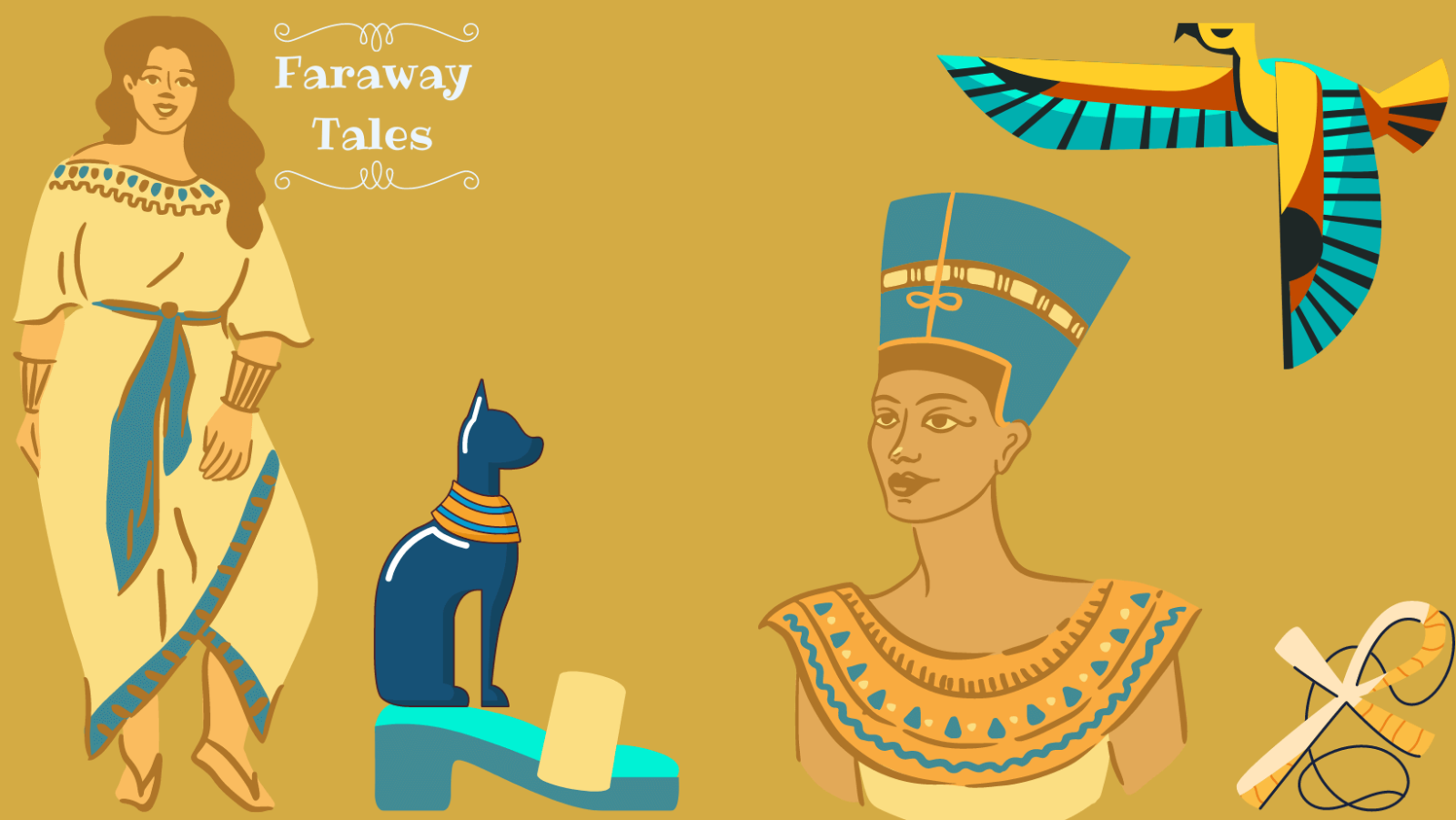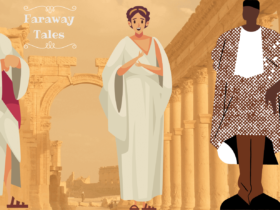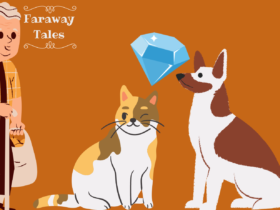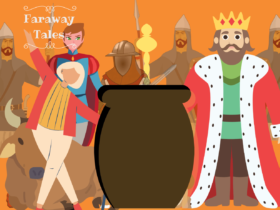|| A folktale from Greece ||
Long before Cindrella became popular, a story very similar was recorded by the Greek geographer Strabo in 24AD. The same was corroborated by Herodotus, who recorded legends in the Greek language. The story goes as follows:
Rhodopis (meaning cheeks like rose-petals), was a slave girl who lived in the region of Thrace (now mordern Greece and Bulgaria). No record of her previous history was found until she was part of the slave trade. She, along with other slaves, one of whom was Aesop, the fortune-teller (of Aesop’s fables), set sail from the Greek island of Samos and was sent to Egypt to be sold off.
There, in the open market, an old merchant, Charaxus, felt sorry for the young and lovely maiden and paid a huge sum of money for her to be released.
Rhodopis came to be employed as a servant in the Charaxus household. Rhodopis served in the house along with the other servants. She set out early in the morning to take a bath in the Nile. After her bath, she danced on the bank of the river, but never stepped out during the day otherwise.
One day, Charaxus saw Rhodopis dancing. So graceful was her dance that it seemed as if she was floating above the ground. Being a kind master, he got a pair of sandals exquisitely made for her.
Rhodopis started to wear them and dance as usual. Once, one of her slippers fell into the water by accident. Rhodopis got it out and left it on a large rock to dry under the sun.
Then it is said that an eagle took the sandal and flew away. The eagle after a while, dropped the sandal, which fell into the Pharoah’s lap.
The Pharoah, believing this to be a sign from the Gods, sought the wearer of the sandal. The soldiers were ordered to try the sandal on all the women in the kingdom, and whoever it fit, were to marry the king.
So the soldiers went to every town and city and the dainty slipper fitted none. They missed Rhodopis because she never went out during the day. After many days of searching, they heard of a girl who comes out early in the day. They traced and found Rhodopis and of course, the sandal fitted her.
Rhodopis was then presented before the Pharoah and she produced the other sandal of the pair that she had. Rhodopis and the Pharoah Amasis were married. This is told as the story of the slave girl who became a queen.
Where this version is different from Cinderella is the absence of a witch mother and evil stepsisters. There was no element of obvious torture. Another interesting element is that, even though Rhodopis and the Pharoah’s marriage happened due to a chance event, it was said that they loved each other very much, so much so that they died on the same day holding hands.
This version of the story has been modified and retold several times throughout Greek history. This story is not mentioned at all in Egyptian history since it is assumed that Egyptians did not like the fact that a Greek slave could become queen of Egypt.
Whether pleasant or not, this story is widely considered as a true story and the inspiration to Cinderella.
Like (0)







Leave a Reply